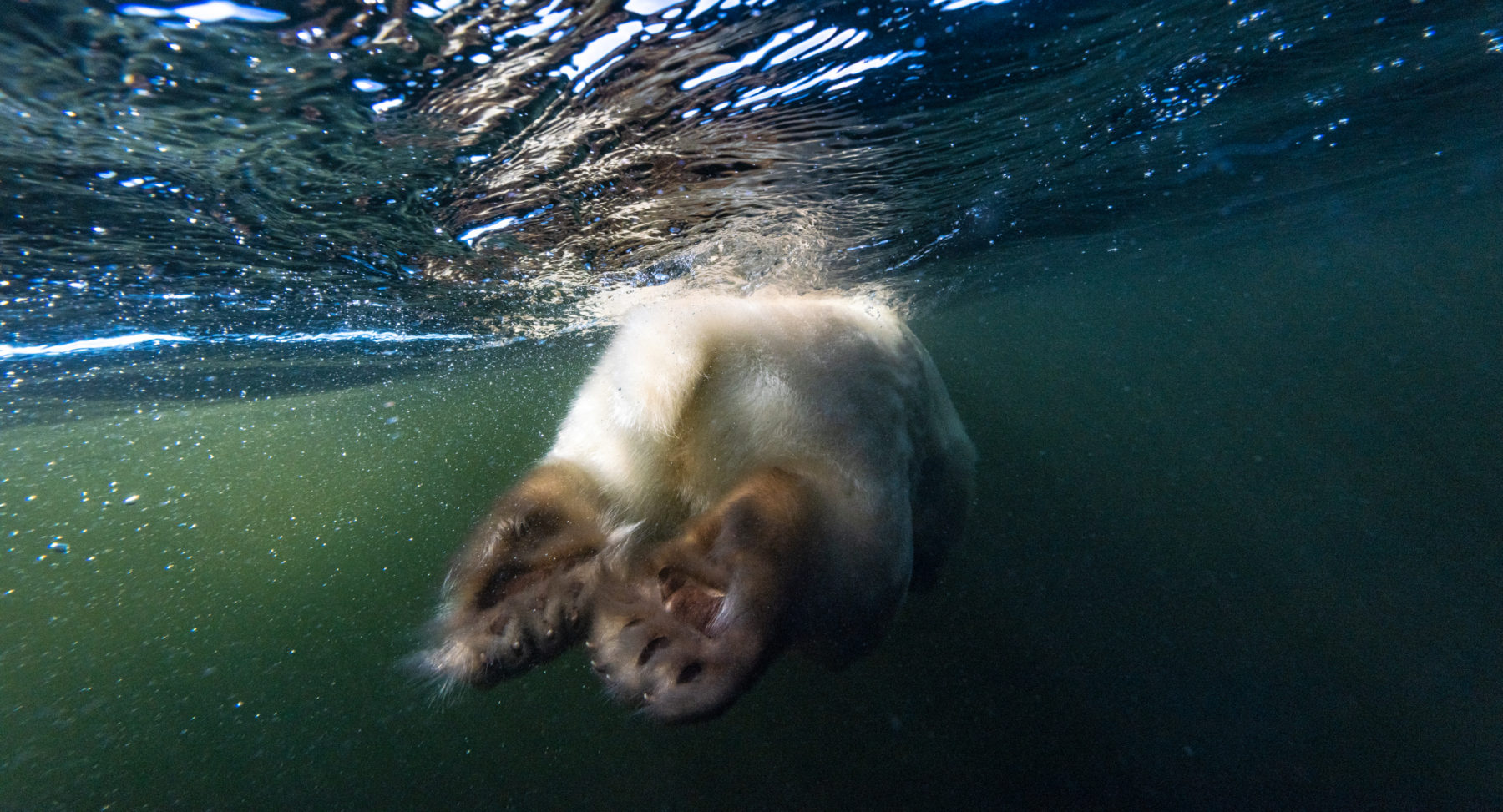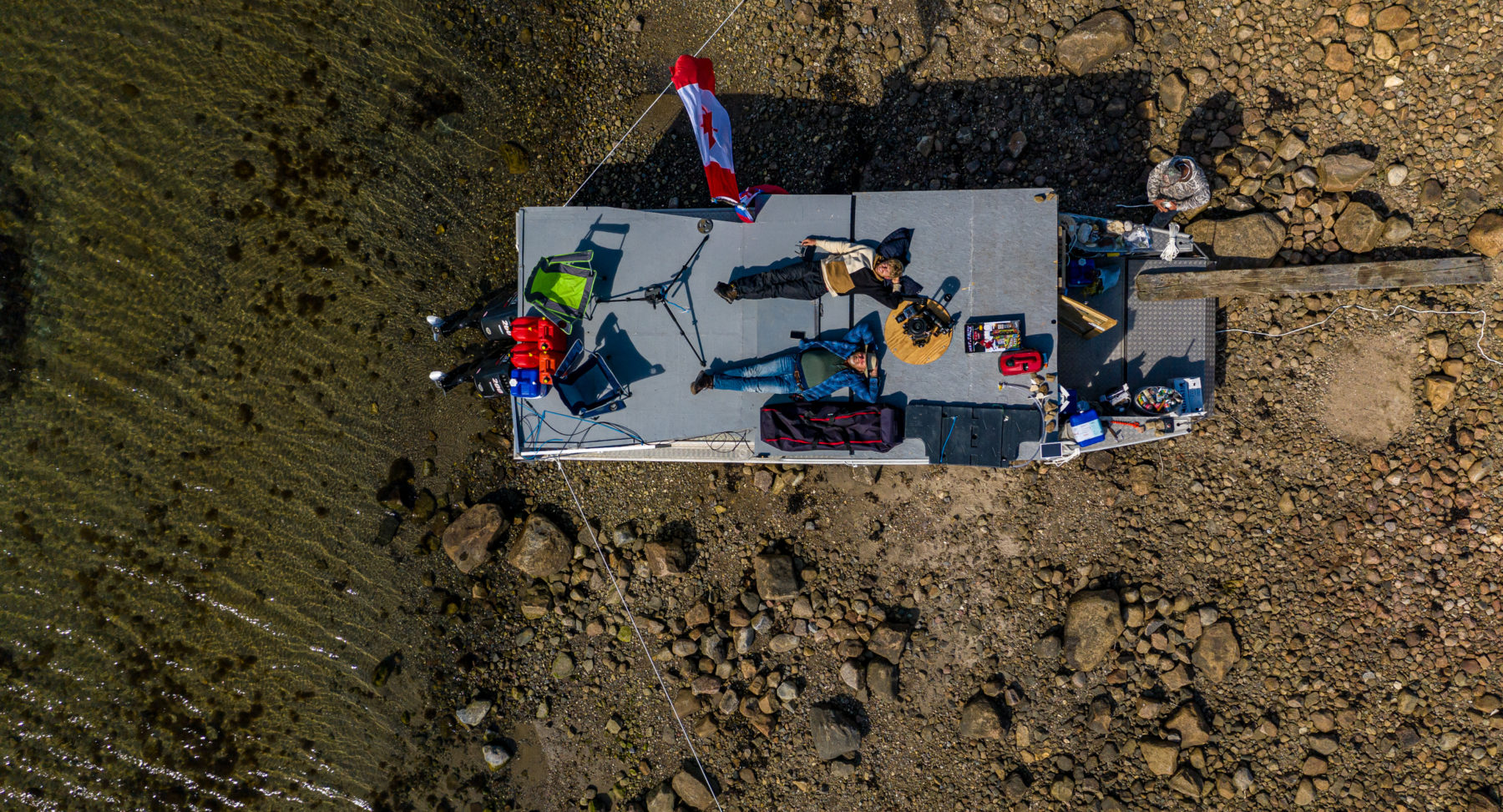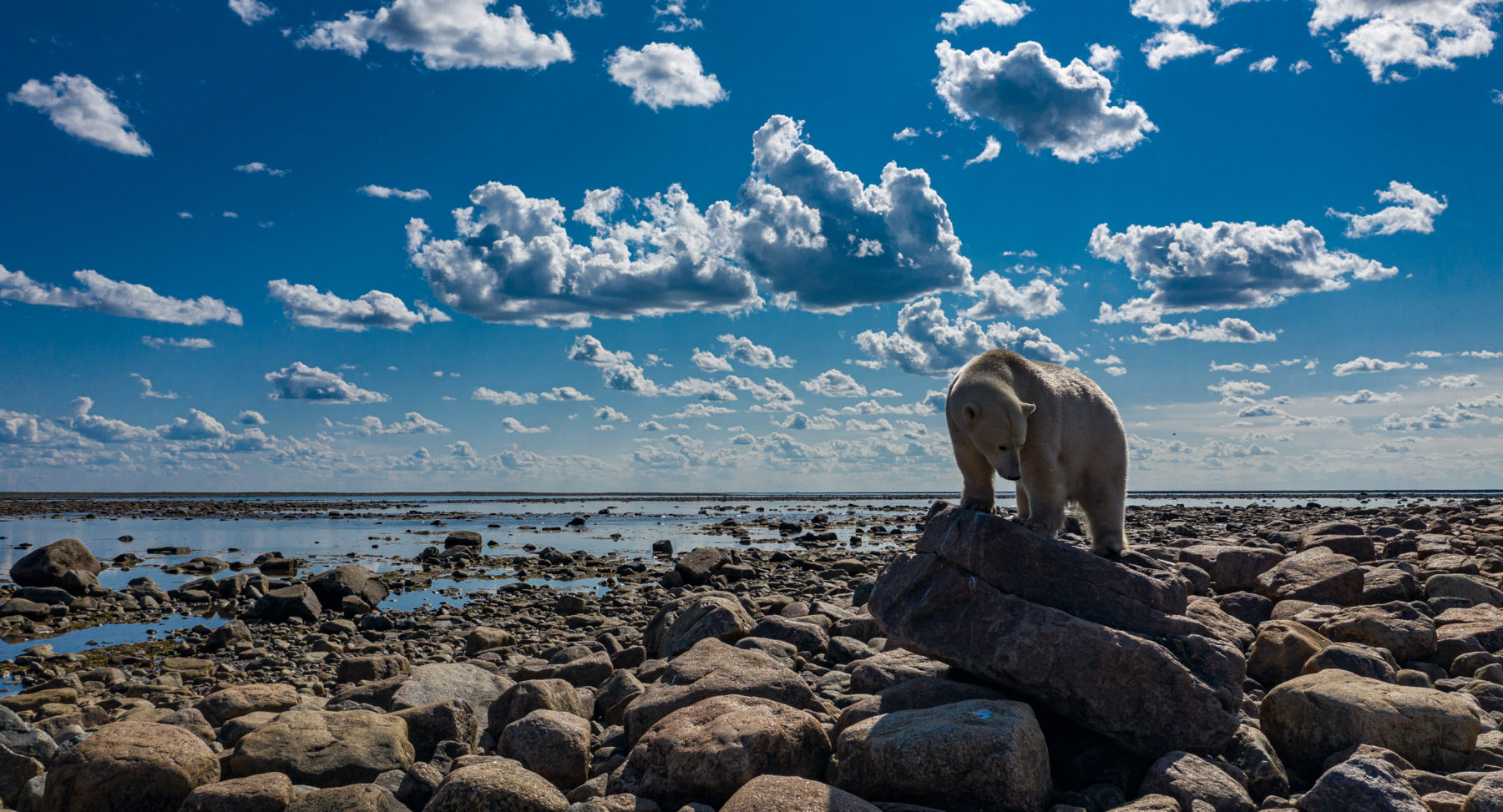What happened to this polar bear?

You can’t unsee this photograph. In an instant you are there with the bear swimming for its life. It was captured on a drone by Martin Gregus in the middle of Hudson Bay in north eastern Canada.
Explorers caught up with Martin to find out if this bear made it and more about his extraordinary time with the polar bears.
Your winning photo is so powerful, how close were you to the polar bear?
For the winning picture we were actually very far away as it was taken with a drone (the drone was only a few meters from the bears) but we were about 500m from the drone. That being said various other images both awarded in the rising star portfolio and others from the expedition vary in distance. For instance I was only a few feet away from the polar bear for the underwater sequence.
We heard your equipment broke during the shoot, what happened?
The images at the WPY awards are actually from my expedition in 2020 when I spent 13 days with the bears, I returned again in 2021 to camp with them for 20 days. During both expedition we had various equipment malfunctions, most notably the camera boat that we built. It worked perfectly in our pool and the river, but coming up against the arctic ocean the RC failed and we had to come up with new solutions. Including putting myself into a small boat with a long pole and filming the bear underwater.
Was the bear alone?
During the two expeditions we saw upwards of 50 different bears including mom and cubs, moms and teenage cubs, lone males, female groups…

How far did he have to swim?
Polar Bears, also known as sea bears travels great distances on the water, sometimes hundreds of kilometres and while this one only had to travel about 10km to land others have to cross a lot more. It all depends on the winds and where the sea ice breaks up, the bears of course don’t mind seeding time with the water. Their large front legs propel them forward while their hind legs work as a rudder to push them through the ocean.
Do you know if he made it?
Yes, this and the majority of the bears make it to shore from the sea ice. Where they make it is a whole other story as the polar bears have enormous ranges, venturing far out to sea on the ice and then migrating along the shore to where the sea ice forms first. The toughest time for the bears is actually towards the end of summer just before the ice from, not when they swim to shore.
How do you cope with seeing the effects of climate change so close up?
This is very hard to answer and I think that for me at least the effects of climate change aren’t localized to the polar bears. Climate change is around us from the fires in Australia and North America, to the rising oceans… The story of the polar bears is just one in a million.
Not to mention the whole idea of us documenting the bears in the summer came from trying to share a different story and see different behaviours to that we might see in other part of the arctic. While in trouble the Hudson Bay population which we saw included only healthy bears. In direct contrast to polar bears in other part of the world the biggest threat to the bears we see are people and the unpredictability of our season.
This of course making it not only difficult to film the bears, but also making it difficult for the bears to find food when they don’t know when the sea ice will from or melt, sometime it’s early and sometimes it’s late we just don’t know anymore.

You were just on an inflatable boat, was that scary?
During my 33 days with the bears myself and my team actually lived on a custom 24 foot aluminum boat, we built three bunk beds and a bear proof box in the back of the boat. In 2020 we just had a taped off area as the living room/sleeping area. In 2021 we went further and covered the whole boat with wood creating a very secure and comfortable camp.
We hear you are just about to go back to Antarctica, are you excited?
I’m actually heading back up to the Arctic next week and then maybe Antarctica in late 2022 early 2023. While I was hoping to take a break this year from the arctic (since I have been going every year since 2015 and I intend to spend the majority of 2023 there) I managed to come across a few different expeditions which will take me all the way to the Northwest Passage this year. I am very excited, but it always comes with a sense of anxiety since I plan the majority of my expeditions.

What are you doing this time there?
I cant discuss the details of a few of these projects, but for the main one I am doing the logistics and some of the filming for a Brazilian Sailing team who a re traveling from Alaska across the high Arctic to the Hudson Bay. With extensive knowledge of these area I am helping out with the planning and then actually traveling with the team throughout various times during this summer.
What is one thing you wish everyone would do to help save incredible species like the polar bear?
I really wish people would educate them selves not just on climate change, but also on habitat loss, hunting, wildlife management…. These are all threats of equal and in some areas greater importance. Especially in places like Canada that on paper appear very green, but in reality are actually some of the worst countries for the environment imaginable. I really wish people would see that and take the steps necessary to push governments to change.
I also really hope that from seeing my pictures people get to see these animals not as scary creatures, but as loving individuals each with their own personality and importance in the natural world. For us they are just bears, but for the planet, each has their own role in maintaining the natural balance.

You can see Martin’s work in person at Australian National Maritime Museum, where the 57th Wildlife Photographer Exhibition is currently on show., or visit his website www.matkopictures.com or Instagram @mywildlive

